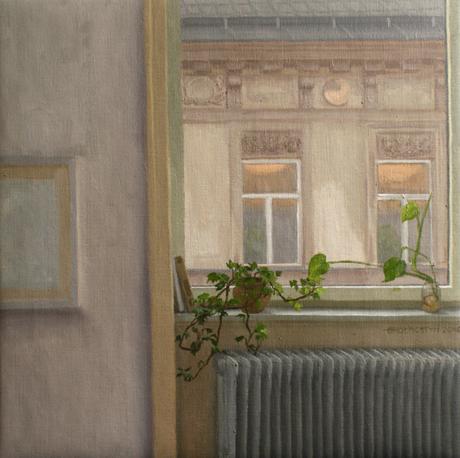
Erdbergstraße © Samantha Groenestyn (oil on linen)
I find the metaphor of language to be very illuminating when talking about painting. Of course pictures do not communicate with us in the direct and specific way that words do. But the visual realm affords a certain kind of exchange: some form of expression on the part of the artist, and some form of inner response on the part of the viewer. We can think of this exchange as a manner of communication, and the medium as a language. A visual language might extend our toolbox, allowing us to say something about emotion, for example, with a force or clarity that words might lack: Wittgenstein (1966: 1) reminds us that ‘I have often compared language to a tool chest, containing a hammer, chisel, matches, nails, screws, glue. It is not a chance that all these things have been put together—but there are important differences between the different tools.’
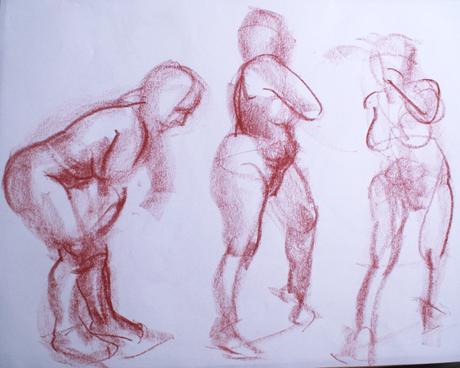
Painters take up the tools of the visual language, but before they ever try to say something with this language to another person, they use it to arrange their thoughts. They think through the medium of paint, and their thoughts are of a corresponding nature—such thoughts are not readily thought in words. ‘Art itself becomes the innovator’s instrument for probing reality,’ as Gombrich (1959: 274) aptly describes it.
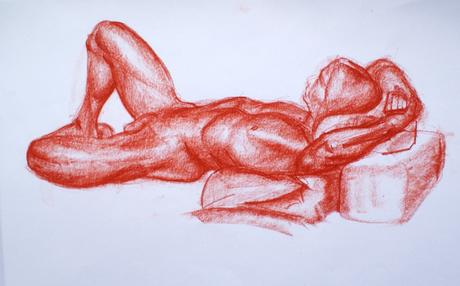
The truly thoughtful painter is an experimenter: she tries new combinations, she feels her way in paint until she finds what works. ‘There is no way of finding out,’ writes Gombrich (1959: 279), ‘except by trial and error, in other words, through painting.’ Successful experiments open doors to innovation: genuine discoveries that grow the language. But this growth, as it must be in verbal language, is something closer to a rearrangement, a small adjustment, rather than a dramatic break. ‘Language grows by introducing new words,’ observes Gombrich (1959: 274), ‘but a language consisting only of new words and a new syntax would be indistinguishable from gibberish.’ This gentle adjustment of the visual language through experiment reminds me of Wittgenstein’s assertion that ‘the problems are solved, not by giving new information, but by arranging what we have always known.’
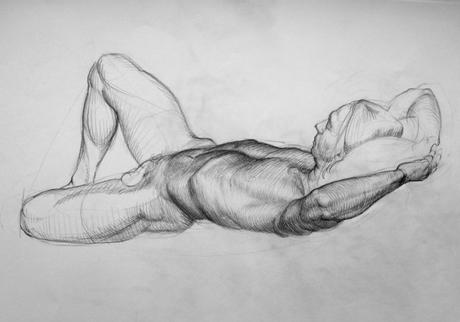
Language as a metaphor helps emphasise the deliberateness of experimentation in paint. As Gombrich (1959: 274) writes, ‘The systematic explorer can afford less than anyone else to rely on random actions. He cannot just splash colours about to see what happens, for even if he should like the effect he could never repeat it.’ The shadowy threat of silence hangs over chance discoveries: perhaps the discovery is so far removed from the current dialogue that no one understands it. The painter who really wants to use paint to ‘speak’ with others must be generous enough not to completely break her connection with the viewer.
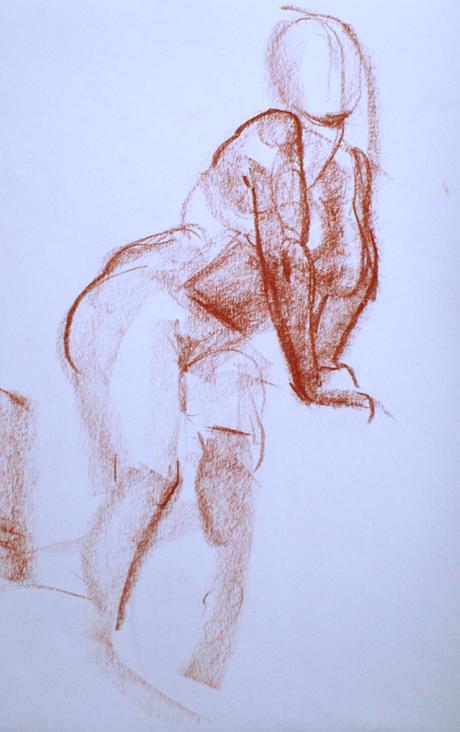
But from the other side, the viewer must work to follow the painter’s cues and make an effort to learn the ever-growing visual ‘vocabulary.’ I think it is at this point that we begin to be troubled by the idea of subjectivity in painting. When someone looks at a painting and hears only silence, he would rather blame the painter’s self-absorption than his own inadequacy with the language. But the painter might say of her painting as Wittgenstein says of his writing (1953: x), ‘I should not like my writing to spare other people the trouble of thinking. But, if possible, to stimulate someone to thoughts of his own.’
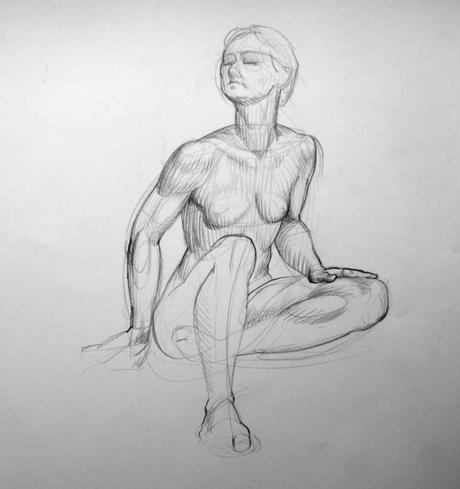
Speaking of a visual language helps us be clear that the painter is deliberately emerging from the silence and attempting to engage another person in a dialogue. She brings new insights, distilled and eloquently articulated thoughts, and even variations on the language into the discussion, for she is an author in that language. She is an expert in the orchestration of that language. But the viewer, like a well-versed reader, must be ready to receive such ‘literature,’ he must know enough to understand the core of it, and be willing to actively work to grasp the rest. As he absorbs the developments into his understanding, the dialogue continues, the language grows. The apparent subjectivity of the work dissolves as painter and viewer mutually advance the language.
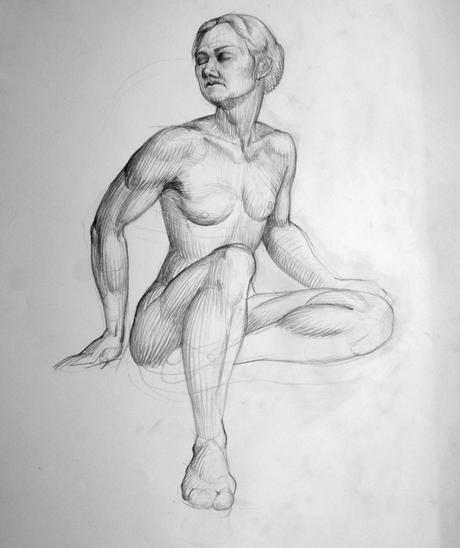
Gombrich (1959: 275) is quite right to say that ‘the assertion of subjectivity can be overdone.’ He uses the Impressionists as an example. Their genuine visual discovery that the world might be seen in terms of flecks of light was initially met with great resistance. The public found this reframing of the visible world ‘hard to read and hard to accept because it had not yet been trained to interpret these new combinations in terms of the visible world’ (Gombrich 1959: 275). This resistance is now hard to imagine, the Impressionists now being so dearly loved by so many, but that is precisely because, having learned this vocabulary, having turned it upon the physical world, we have found this visual description in fact very apt, and very pleasing.
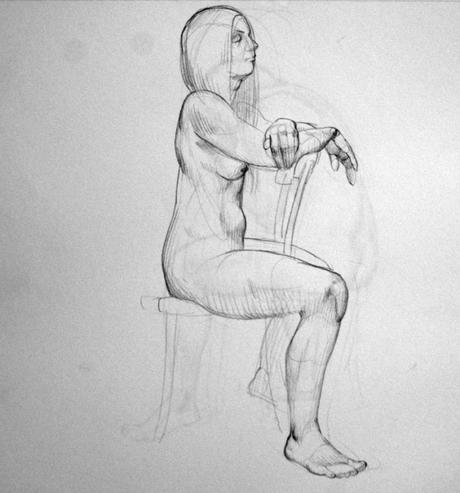
Framed in this way, subjectivity need not enter into painting at all. A dialogue has two sides, and though the speaker may ask extra of the listener through her incremental experiments, the listener can be richly rewarded for tasking himself with learning the language and trying to keep up.
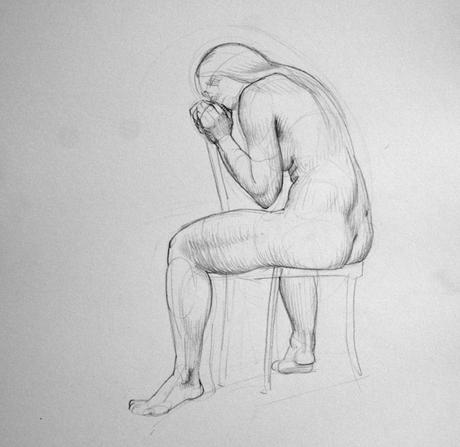
Gombrich, E. H. 1959. Art and illusion. Phaidon: London.
Wittgenstein. Ludwig. 1953. Philosophische Untersuchungen / Philosophical Investigations. Trans. G. E. M. Anscombe. Basil Blackwell: Oxford.
Wittgenstein, Ludwig. 1966. Lectures and conversations on aesthetics, psychology and religious belief. Ed. Cyril Barrett. Basil Blackwell: Oxford.

